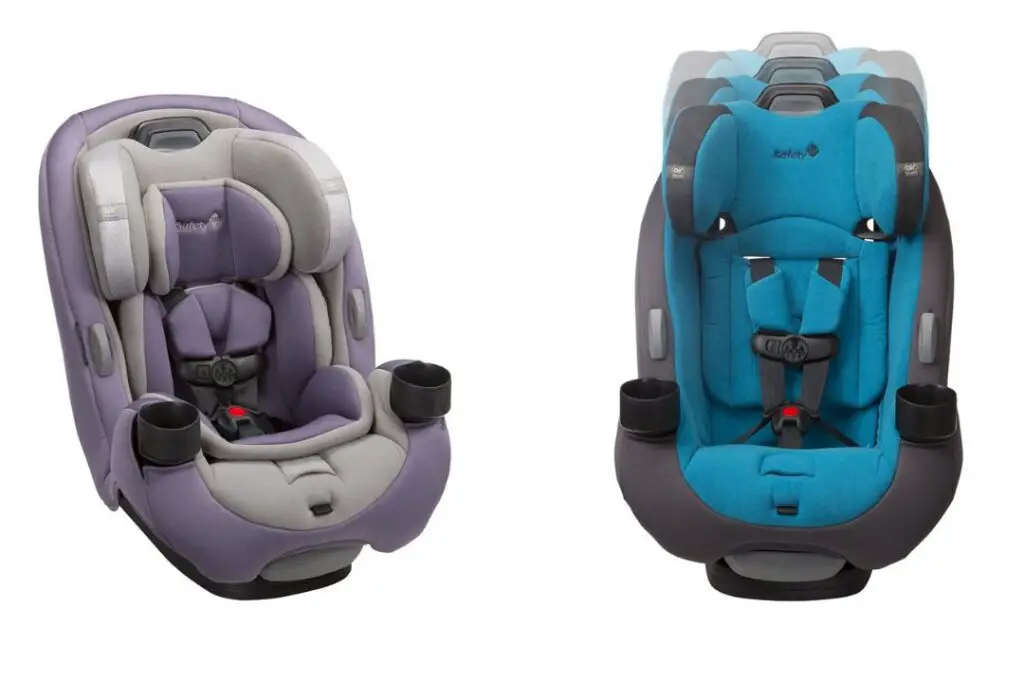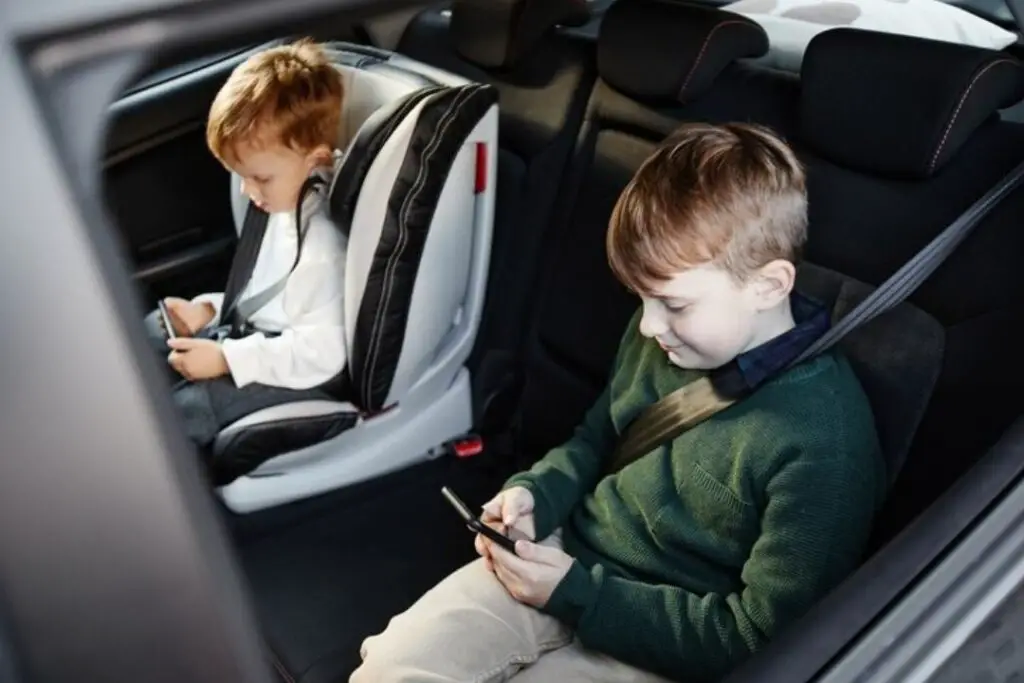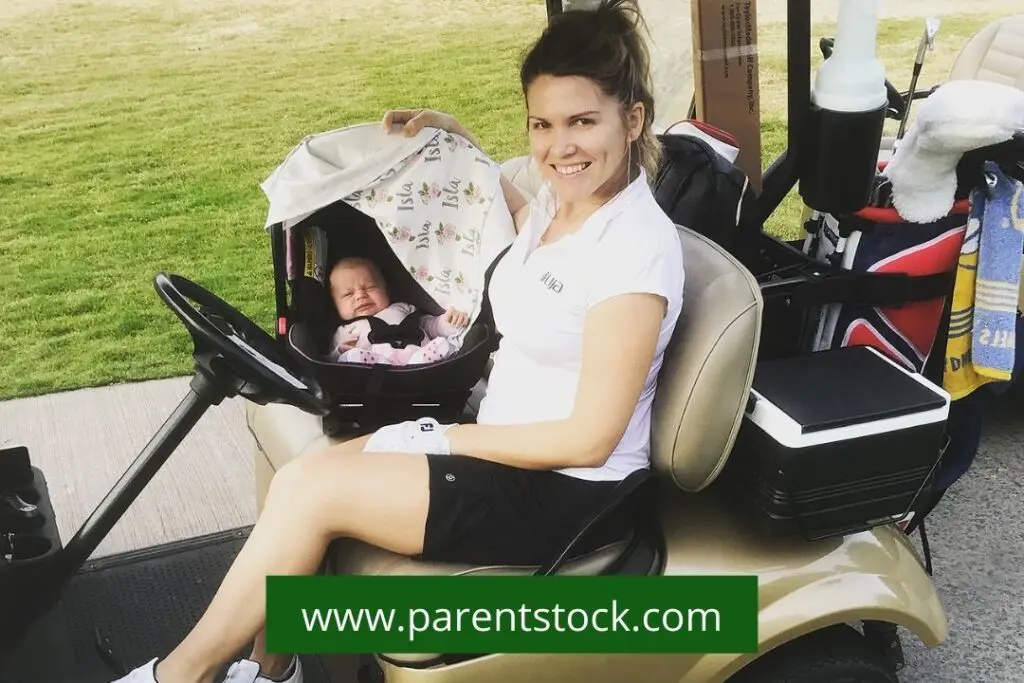Car seat safety is an essential aspect of parenting and it’s important to ensure that you’re using the appropriate type of car seat for your child’s age and size. Choosing the right car seat can be overwhelming as there are many different types of car seats available on the market, each with its own set of features and guidelines.
In this blog post, we’ll go over the different types of car seats available. The age range for which they’re appropriate. We’ll also cover important safety features and installation instructions to help ensure that your child is as safe as possible while riding in a vehicle.
It’s crucial to understand the different types of car seats, and when to transition your child to a different one, as it can save lives in case of an accident. With the right knowledge and tools, you can help protect your child and give yourself peace of mind while on the road.
Read More: 10 Best Narrowest Infant Car Seats
Different Types of Car seats
Multiple types of car seats are available in the market here are some common types.
Rear-facing infant seat: Designed for infants from birth to 12 months, these seats are meant to be installed in the rear-facing position. They provide head, neck and spine support for newborns and infants.
Forward-facing toddler seat: These seats are designed for children between 1-3 years of age. They are installed in the forward-facing position and provide safety features such as a harness to keep the child secure.
Booster seat: This seat is meant for children between 4-7 years of age and 8-12 years of age. It’s designed to elevate the child so that the seat belt fits correctly.
Combination seat: This type of seat can be used as both a forward-facing seat and a booster seat. It can accommodate children from 2-10 years of age.
Convertible seat: This type of seat can be used as a rear-facing seat for infants, and then converted to a forward-facing seat for toddlers. It can be used from birth to around age 5-7.
1. Rear-facing Infant Car Seats
Rear-facing infant car seats are designed for infants from birth to 12 months old. These seats are meant to be installed in the rear-facing position and provide head, neck and spine support for newborns and infants. They are smaller in size and can be easily installed in the back seat of a car. They often come equipped with a handle which allows them to be used as a carrier when not in the car. These seats have a 5-point harness that securely fastens the infant in place. It’s important to note that it’s recommended that infants should remain in a rear-facing seat for as long as possible. Typically until they reach the maximum height and weight limit of the seat. This is because rear-facing seats provide the best protection for the head, neck and spine in the event of a crash.
Rear-facing Infant Seats: Safety features
5-point harness: This keeps the infant securely fastened in the seat and distributes the force of a crash across the strongest parts of the body.
Side-impact protection: This feature provides extra protection for the head and torso in the event of a side-impact crash.
Built-in canopy: It protects the infant from the sun, wind and other environmental factors.
Recline indicator: This feature helps ensure that the seat is at the correct angle for the infant’s age and weight.
EPS energy-absorbing foam: It provides added protection and helps to distribute crash forces away from the child.
Adjustable headrest: It helps keep the infant’s head and neck supported, especially when they are sleeping.
Removable infant insert: it provides extra support and cushioning for newborns and small infants
LATCH (Lower Anchors and Tethers for Children) system, this system allows you to securely install the seat in the vehicle without using the seatbelt.
base lock-off or lock off lever, this feature allows you to lock the base in place, reducing the risk of it moving during a crash
harness covers, this feature protects the baby from the harness straps and provides extra comfort for the baby
removable and washable cover, it makes it easy to keep the seat clean and hygienic.
Rear-facing Infant car Seats: Installation Instructions
Start by reading the instruction manual that comes with your car seat. Make sure you understand all the instructions and safety guidelines before proceeding with the installation.
Locate the appropriate position for the car seat in your vehicle. It should be in the back seat, and the seat should be reclined at the appropriate angle for your infant’s age and weight.
Install the base of the car seat by threading the seatbelt through the appropriate slots, or by using the LATCH (Lower Anchors and Tethers for Children) system. Make sure the base is securely fastened and does not move more than 1 inch from side to side or front to back.
Place the car seat on top of the base and secure it by clicking it into place. Make sure it is securely fastened and does not move more than 1 inch from side to side or front to back.
Adjust the harness straps to fit your infant snuggly, ensuring that the straps are at or below the shoulders and the chest clip is at armpit level.
Tighten the harness as much as possible to ensure that your infant is snugly and securely fastened in the seat.
Finally, make sure that the car seat is properly reclined and adjust the recline indicator if necessary. It’s important to check the recline angle before each trip, to make sure that the seat is at the correct angle for your child’s age and weight.
Always check the installation by pushing down firmly on the car seat at the base and the child’s shoulder level, and make sure it does not move more than 1 inch in any direction.
Read More: How To Install Graco Car Seat Base?
2. Forward-facing Toddler car Seats
Forward-facing toddler car seats are designed for children between 1-3 years of age. These seats are meant to be installed in the forward-facing position and provide safety features such as a harness to keep the child secure. They have a 5-point harness that keeps the child fastened into the seat, providing head, neck and spine support.
These seats are larger in size and are designed to accommodate toddlers as they grow. They often come equipped with a removable cup holder and a removable head pillow for added comfort.
It’s important to note that once the child outgrows the weight and height limits of the seat, they should be transitioned to a booster seat. This is because forward-facing seats provide less protection for the head, neck, and spine than rear-facing seats.
Forward-facing Toddler car Seats: Safety features
5-point harness: This keeps the toddler securely fastened in the seat and distributes the force of a crash across the strongest parts of the body.
Side-impact protection: This feature provides extra protection for the head and torso in the event of a side-impact crash.
Tether: This feature helps to limit the forward movement of the child’s head and neck in a crash.
EPS energy-absorbing foam: It provides added protection and helps to distribute crash forces away from the child.
Adjustable headrest: It helps keep the toddler’s head and neck supported, especially when they are sleeping.
Removable cup holder: It provides a convenient place to hold a drink or snacks
Removable head pillow: It provides extra comfort and support for the toddler’s head and neck.
LATCH (Lower Anchors and Tethers for Children) system, this system allows you to securely install the seat in the vehicle without using the seatbelt.
Harness adjuster: This feature allows you to adjust the harness easily, ensuring a snug and secure fit for the child.
- Removable and washable cover, it makes it easy to keep the seat clean and hygienic built-in harness storage. This feature keeps the harness in an upright position when the child is getting in and out of the seat
- Recline indicator, this feature helps ensure that the seat is at the correct angle for the child’s age and weight
- Level indicator, this feature helps ensure that the seat is installed at the correct angle and level.
Forward-facing Toddler car Seats: Installation Instructions
Start by reading the instruction manual that comes with your car seat. Make sure you understand all the instructions and safety guidelines before proceeding with the installation.
Locate the appropriate position for the car seat in your vehicle. It should be in the back seat, and the seat should be reclined at the appropriate angle for your toddler’s age and weight.
Install the base of the car seat by threading the seatbelt through the appropriate slots or by using the LATCH (Lower Anchors and Tethers for Children) system. Make sure the base is securely fastened and does not move more than 1 inch from side to side or front to back.
Place the car seat on top of the base and secure it by clicking it into place. Make sure it is securely fastened and does not move more than 1 inch from side to side or front to back.
Adjust the harness straps to fit your toddler snuggly, ensuring that the straps are at or above the shoulders and the chest clip is at armpit level.
Tighten the harness as much as possible to ensure that your toddler is snugly and securely fastened in the seat.
Attach the tether to the designated anchor point in the vehicle, making sure it is tight and secure.
Finally, make sure that the car seat is properly reclined and adjust the recline indicator if necessary. It’s important to check the recline angle before each trip, to make sure that the seat is at the correct angle for your child’s age and weight.
Always check the installation by pushing down firmly on the car seat at the base and the child’s shoulder level. Make sure it does not move more than 1 inch in any direction.
It’s important to periodically check the installation, the tightness of the harness and the position of the headrest and adjust as needed to ensure the child’s safety.
3. Booster car Seats
Booster seats are designed for children between 4-7 years of age and 8-12 years of age. These seats are designed to elevate the child so that the seatbelt fits correctly across the child’s chest and hips. They do not have a harness, but instead, rely on the vehicle’s seatbelt to keep the child secure.
There are two types of booster seats available, the high-back booster and the backless booster. High-back booster seats have a backrest that provides support for the child’s head and neck, while backless booster seats do not.
Both types of booster seats have a built-in seat that raises the child up so that the seatbelt fits correctly. It’s important to note that children should use a booster seat until they are big enough to fit properly in the seatbelt without one, typically around 4’9″ tall and between 8-12 years old.
Booster car Seats: safety Features
- Elevates the child so that the seatbelt fits correctly across the chest and hips
- High-back booster seats have a backrest that provides support for the child’s head and neck
- Backless booster seats do not have a backrest
- Built-in seat that raises the child up so that the seatbelt fits correctly
- Side-impact protection and energy-absorbing materials
- Some booster seats come with a removable and washable cover
- Have cup holders
- Some booster seats have armrests for added comfort
- Have a built-in LATCH system for easy installation
- These have a height indicator, that help you to adjust the headrest to the right height for your child
- Some booster seats have a level indicator, that help you to adjust the seat to the correct angle and level.
- Some booster seats have a harness storage, that helps keep the harness out of the way when the child is getting in and out of the seat.
It’s important to note that Booster seats are designed to be used with the car’s seatbelt, and not with the LATCH system.
Booster car Seats: Installation Instructions
Start by reading the instruction manual that comes with your booster seat. Make sure you understand all the instructions and safety guidelines before proceeding with the installation.
Locate the appropriate position for the booster seat in your vehicle. It should be in the back seat, and the seat should be at the appropriate level and angle for the child.
Place the booster seat on the vehicle’s seat and thread the seatbelt through the appropriate slots on the booster seat.
Make sure the seatbelt is securely fastened and the booster seat is snug against the vehicle’s seat.
Position the lap belt across the child’s thighs, not stomach, and the shoulder belt across the child’s chest, not the neck.
Adjust the headrest, if the booster seat has one, to the appropriate height for the child’s head.
Finally, check the installation by pushing down firmly on the booster seat, and make sure it does not move more than 1 inch in any direction.
It’s important to check the installation and the position of the seatbelt. The headrest before each trip, to make sure that the seat is at the correct angle and level for the child’s safety.
Always make sure the child is properly buckled and the seatbelt is adjusted to fit snugly across the child’s chest and hips.
Seat Belt Usage
Seat belt usage is the final step in the car seat safety journey. Children should use a booster seat until they are big enough to fit properly in the seatbelt without one, typically around 4’9″ tall and between 8-12 years old.
The seat belt should be adjusted to fit snugly across the child’s chest and hips, with the lap belt low across the hips and the shoulder belt crossing the chest and not the neck.
It’s important to note that even when children are big enough to use the seatbelt alone, they should continue to ride in the back seat of the car, as it is the safest position in the event of a crash.
It’s also important to continue to supervise and ensure that children are using the seatbelt correctly, and to educate them about the importance of always wearing a seatbelt, as it is the most effective way to prevent injuries and deaths in a crash.
Additionally, It’s important to note that airbags can cause serious or fatal injuries to children who sit in the front seat, so it is always recommended that children ride in the back seat until they are at least 13 years old.
FAQS
What age is Stage 1 2 3 car seat?
Stage 1 car seats are for infants up to 12-15 months, Stage 2 car seats are for toddlers from 1-3 years, and Stage 3 car seats are for children from 4-8 years old.
What are the age and weight recommendations for each of the types of car seats?
Infant car seats are for newborns to around 12 months and typically up to 22-35 pounds. Convertible car seats are for infants from birth to around 4-5 years or up to 40-65 pounds. Booster seats are for children who have outgrown their convertible car seats. Typically 4-8 years old and weighing between 40-100 pounds.
Can a 2 year old use a booster seat?
A 2 year old can use a booster seat if they have outgrown their rear-facing convertible car seat and meet the weight and height requirements for a booster seat. It is usually recommended to use a booster seat when the child is at least 4 years old and 40 pounds or more. It is important to follow the manufacturer’s guidelines and the laws in your state when using a booster seat.
Does age of car seat matter?
When types of car seats become a hot topic, age does play a role in determining which type of car seat to use. It is important to choose the appropriate car seat based on the child’s age, weight, and height.
Infant car seats are for newborns to around 12 months, Convertible car seats are for infants from birth to around 4-5 years old. Booster seats are for children who have outgrown their convertible car seats, typically 4-8 years old. It is crucial to follow the manufacturer’s guidelines and the laws in your state when choosing and using a car seat.
Conclusion
In conclusion, there are several types of car seat that are appropriate for children of different ages. Infant car seats are designed for babies from birth to around 12-15 months and are rear-facing. Convertible car seats can be used in both rear-facing and forward-facing positions, and are suitable for children from birth to around 4-5 years of age.
Booster seats are designed for children who have outgrown their convertible car seats, typically between 4-8 years old. High-back boosters are similar to booster seats but with a high backrest, and these are designed for children who have outgrown their low-back booster seats, typically between 4-12 years old.
Backless boosters are similar to booster seats but without a backrest, and are designed for children who have outgrown their high-back boosters, typically between 8-12 years old. It is crucial to follow the manufacturer’s guidelines and the laws in your state when choosing and using a car seat, and it is recommended to consult a certified Child Passenger Safety Technician for help in choosing the appropriate car seat for your child.





